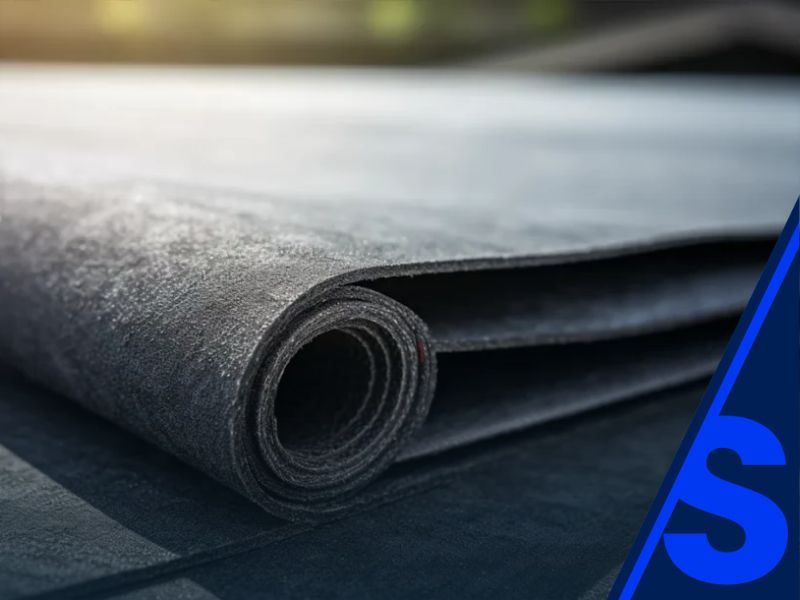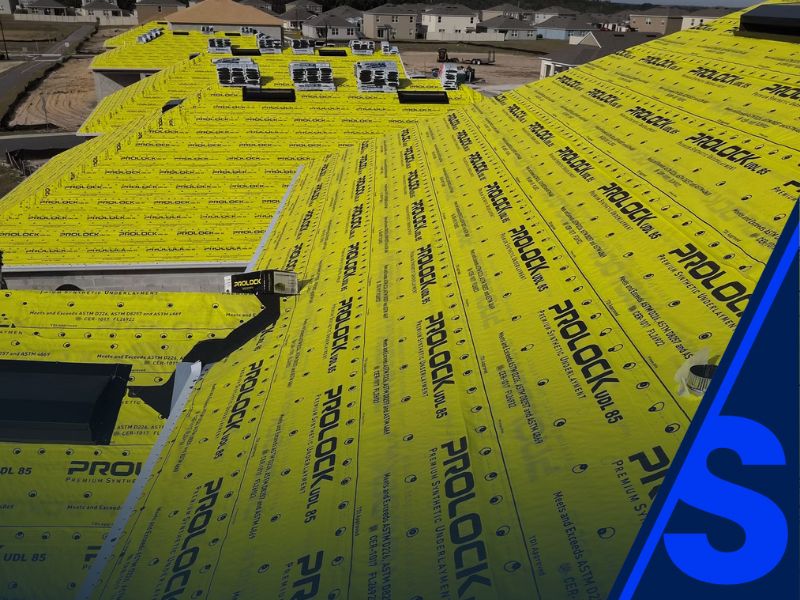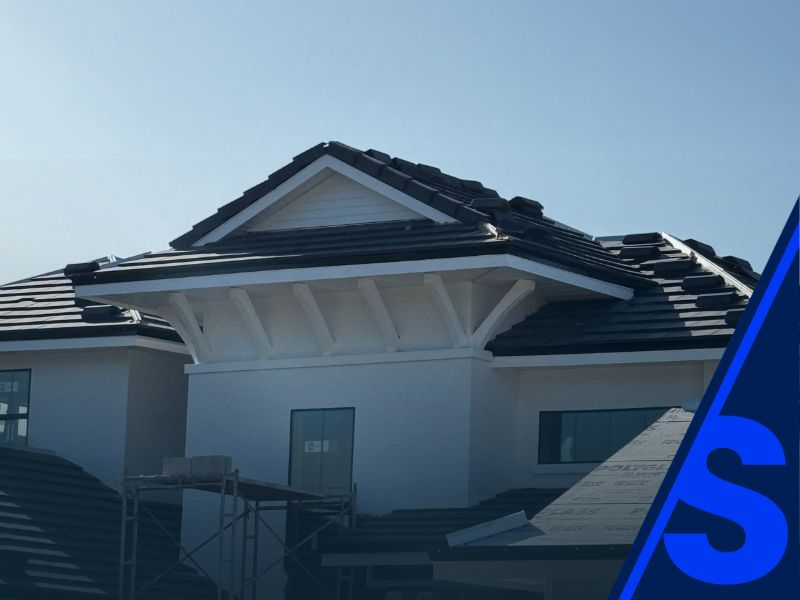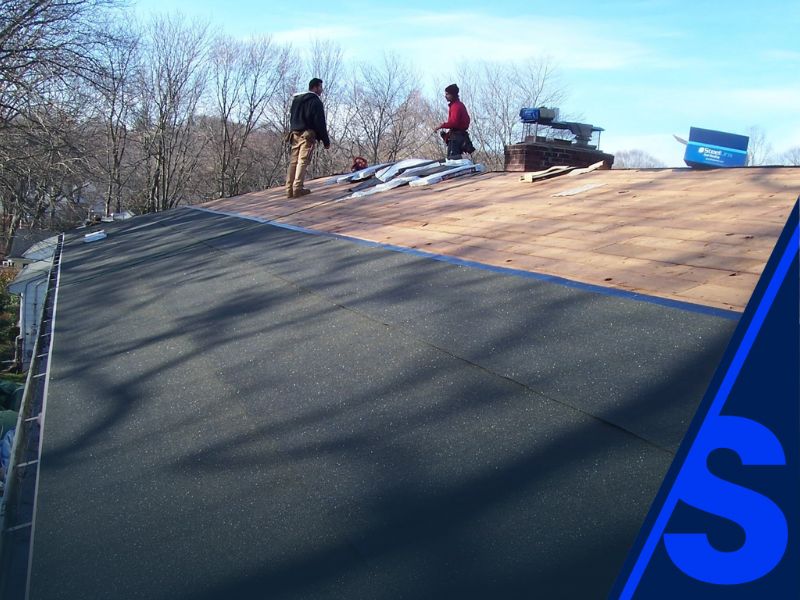Table of Contents
When planning new construction projects, the choice of roof underlayment directly impacts production schedules, warranty compliance, and long-term roof performance. Traditional organic felt, also called asphalt-saturated felt, has been a go-to for decades, but synthetic roof underlayment is quickly becoming the preferred option for builders focused on operational efficiency, quality assurance, and code compliance.
This article explores the differences between felt and synthetic underlayment from a builder’s perspective, highlighting CitySide’s technology-driven quality control processes, project coordination advantages, and actionable frameworks for selecting and installing underlayment in modern roofing systems.
What is Roof Underlayment and Why Builders Should Care
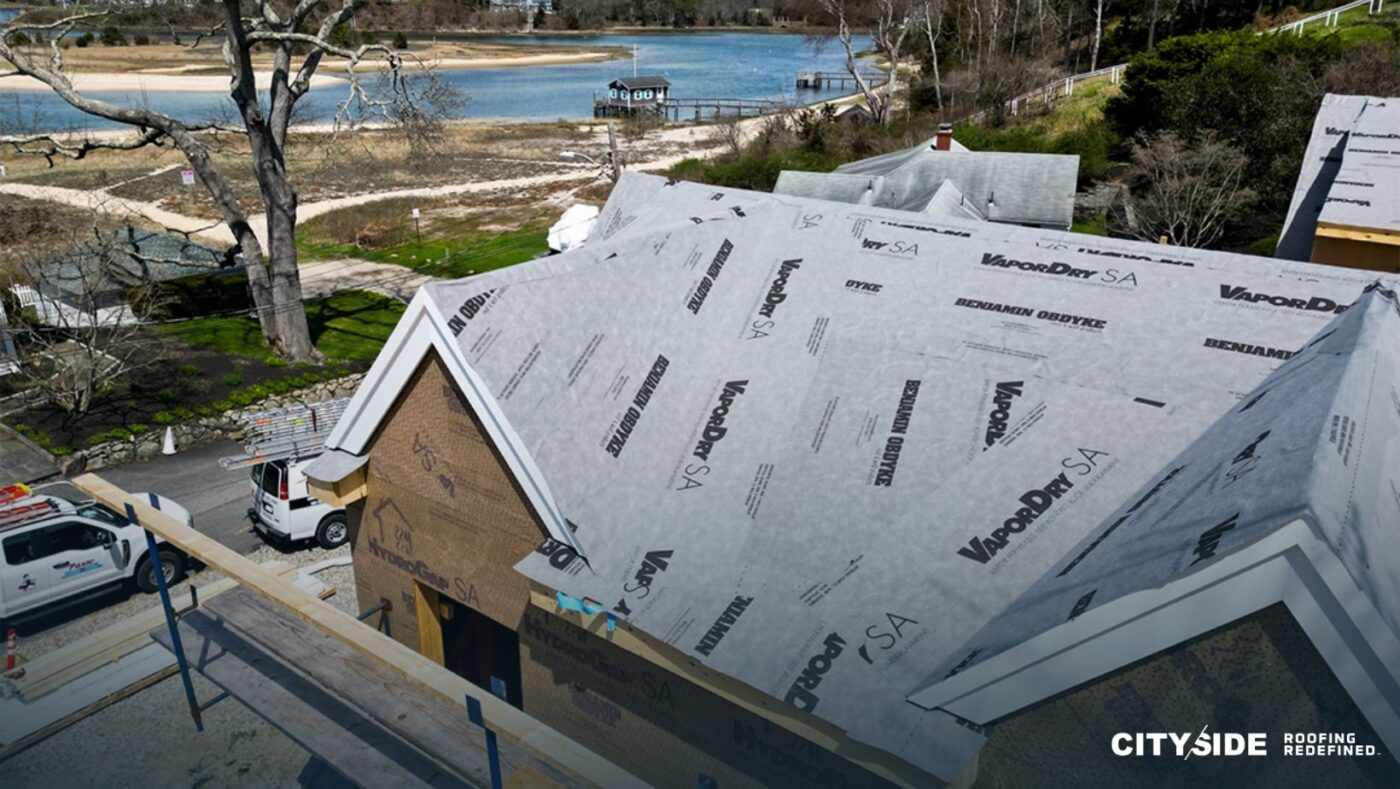
Roof underlayment is the critical barrier installed between the roof deck and roof covering, providing a secondary layer of protection against water infiltration, wind, and environmental stress. Beyond simply being a construction step, underlayment influences warranty compliance, scheduling efficiency, and overall roof system performance.
Builders rely on underlayment not just to protect the roof deck but to streamline installations. A consistent, properly installed underlayment reduces callbacks, ensures code compliance, and allows roofing crews to maintain predictable timelines. CitySide integrates automated inspection systems and documentation protocols to verify every underlayment installation aligns with project specifications and warranty requirements.
Organic Felt Roof Underlayment: Legacy Option
Organic felt, composed of cellulose or fiberglass mats saturated with asphalt, has a long history of performance. It is typically installed beneath shingles during roof construction to provide a water-resistant barrier.
While felt has served builders reliably, it has inherent limitations—particularly for large-scale, high-volume projects. It is heavier, more prone to tearing, and can wrinkle when exposed to moisture. For builders managing tight schedules, these factors translate into slower installations, higher labor costs, and potential warranty issues if the material is improperly installed.
Synthetic Roof Underlayment: Modern Builder Advantage
Synthetic underlayment, constructed from polypropylene or polyethylene polymers, addresses many of the operational challenges associated with felt. It is lightweight, tear-resistant, and engineered for consistent performance under a variety of roof materials including asphalt shingles, metal roofing, and slate.
Builders benefit from synthetic underlayment because it enhances workflow efficiency, minimizes damage risk during installation, and provides stronger protection for the roof deck. Synthetic underlayment also integrates seamlessly with CitySide’s QC and ERP systems to document each step of installation, helping builders maintain warranty compliance and avoid costly project delays.
Comparing Felt and Synthetic Underlayment: Key Considerations
When deciding between felt and synthetic underlayment, builders must weigh performance, project efficiency, and compliance factors:
- Felt is low-cost and familiar to crews, but it can wrinkle, tear, and absorb moisture, affecting roof material adhesion.
- Synthetic underlayment remains flat under exposure, offers better UV and tear resistance, and provides predictable coverage.
- Synthetic options often require fewer laps, enhancing installation speed and reducing the risk of leaks.
For modern construction, synthetic underlayment is increasingly preferred for its operational advantages and its compatibility with technology-enabled quality verification systems.
Pros and Cons for Builders
Pros of felt:
- Lower material cost for budget-sensitive projects
- Long history of industry use
- Widely available
Cons of felt:
- Heavier rolls slow installation
- Tears easily under windy conditions
- Shorter lifespan, potential impact on warranty claims
Pros of synthetic underlayment:
- Lightweight, easier for crews to handle
- High tear resistance and durability
- Consistent performance for improved roof deck protection
Cons of synthetic underlayment:
- Higher initial cost
- Less long-term historical data than felt, but growing industry adoption supports reliability
How Roof Pitch and Design Impact Underlayment Selection
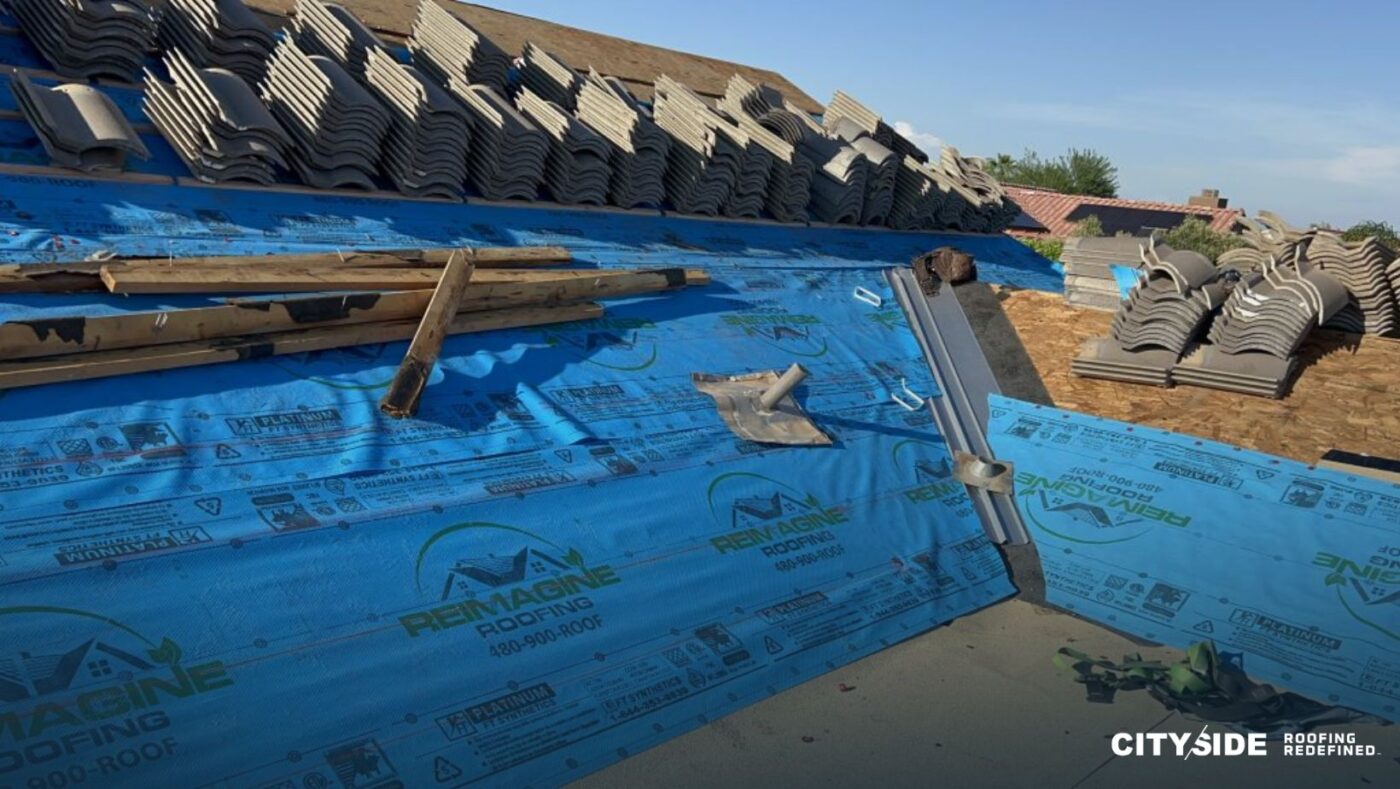
Roof slope and design heavily influence underlayment performance. Steep slopes may shed water quickly, making felt viable in certain applications. Low-slope or flat roofs require a more robust, tear-resistant material—an area where synthetic underlayment excels.
Builders should evaluate the roof’s slope, material, and environmental exposure when specifying underlayment. CitySide provides data-driven guidance to ensure synthetic underlayment selection aligns with project scheduling, reduces risk of blow-offs during installation, and maintains warranty coverage.
Substrate and Roof Deck Considerations
The roof deck’s condition is a critical factor in underlayment performance. Felt can swell or wrinkle when exposed to moisture, which may compromise shingle adhesion. Synthetic underlayment, however, maintains stability, protecting the deck and ensuring a consistent barrier beneath the roofing system.
CitySide employs automated inspection systems to confirm the underlayment is installed evenly, properly fastened, and compatible with the chosen roof material, providing builders with documentation to support warranty compliance.
Builder’s Checklist for Underlayment Selection
- Evaluate roof pitch, slope, and material.
- Verify project climate and UV exposure requirements.
- Choose synthetic underlayment for long-lasting durability and resistance to blow-offs.
- Confirm compatibility with roof covering—shingles, metal, or slate.
- Ensure the underlayment integrates with quality control verification and documentation systems.
This checklist helps builders make data-driven decisions while maintaining schedule and warranty integrity.
How CitySide’s Quality Control Process Ensures Proper Installation
CitySide Roofing sets itself apart by combining advanced underlayment materials with a technology-driven QC process:
- Automated inspection systems verify proper fastener spacing, seam coverage, and lap alignment.
- ERP integration ensures each installation step is documented, helping manage multiple projects simultaneously.
- QC teams provide builders with reports confirming installation quality and compliance with building codes and manufacturer specifications.
These processes reduce the risk of callbacks, minimize rework, and support builders in meeting warranty obligations efficiently.
Cost and Lifecycle Benefits for Builders
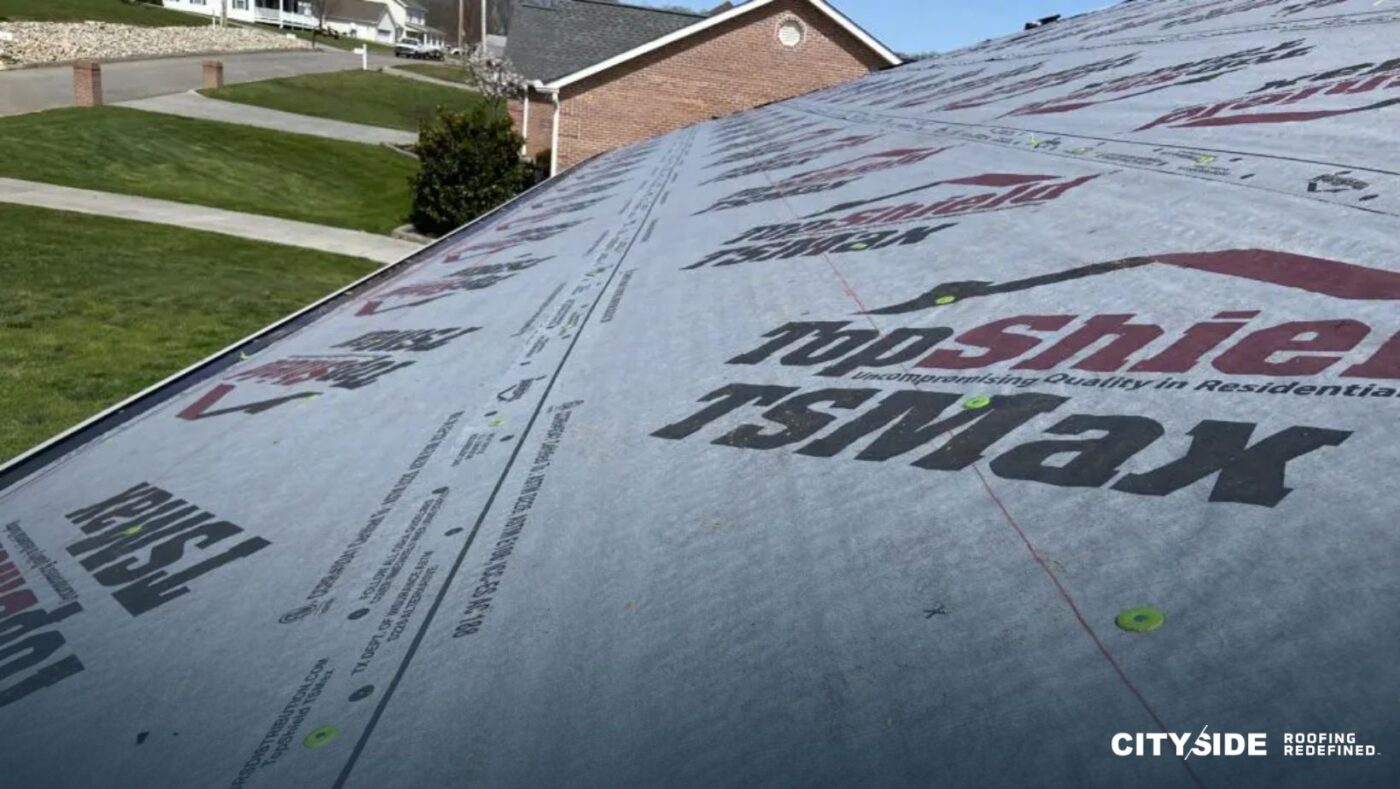
While synthetic underlayment carries a higher upfront cost than felt, its longer lifespan and installation efficiency reduce overall project expenses. Builders benefit from:
- Reduced labor hours due to lighter material and easier handling
- Fewer callbacks or warranty claims related to underlayment failure
- Greater predictability in project timelines, improving production scheduling
Investing in high-quality underlayment reduces long-term operational risks and enhances the reliability of the entire roofing system.
Builder-Focused FAQ
How do you verify proper underlayment installation quality?
CitySide uses automated inspection systems to confirm seam placement, fastener spacing, and lap coverage, providing builders with detailed QC documentation.
What documentation is provided for warranty compliance?
Each underlayment installation is logged in an ERP system, generating reports that track installation quality, date, materials used, and verification steps—ensuring builder warranty obligations are met.
How does underlayment selection affect project scheduling?
Synthetic underlayment simplifies handling and installation, allowing crews to move faster while maintaining compliance, reducing delays due to weather exposure or material tear.
Making the Right Choice for Builder Projects
For modern roofing projects, synthetic roof underlayment outperforms traditional felt in durability, operational efficiency, and long-term roof deck protection. Builders benefit from lighter materials, easier installation, enhanced tear and moisture resistance, and better integration with quality control and documentation systems.
Key points to remember:
- Roof underlayment selection affects schedule, warranty compliance, and long-term roof performance.
- Synthetic underlayment offers superior durability, moisture resistance, and installation efficiency compared to felt.
- Builder-focused QC processes, including automated inspections and ERP documentation, ensure compliance and reduce callbacks.
- Matching underlayment to roof pitch, slope, and material is essential for project success.
For expert guidance on selecting and installing synthetic roof underlayment for your next project, contact CitySide Roofing today.
